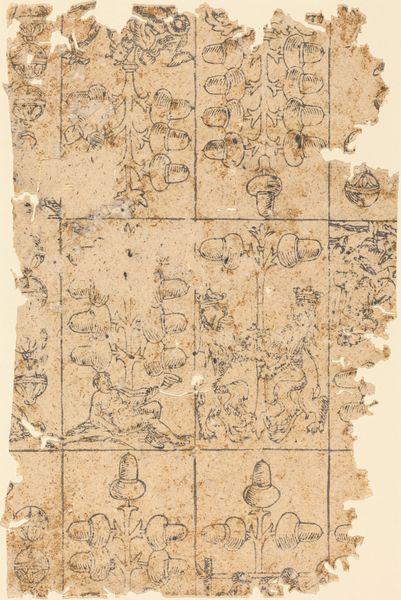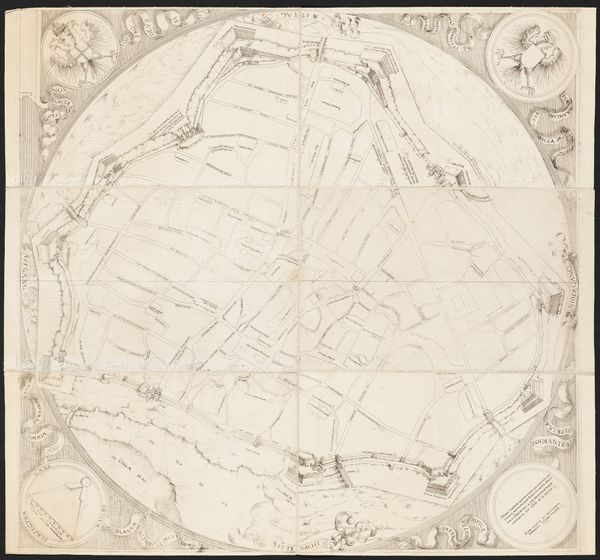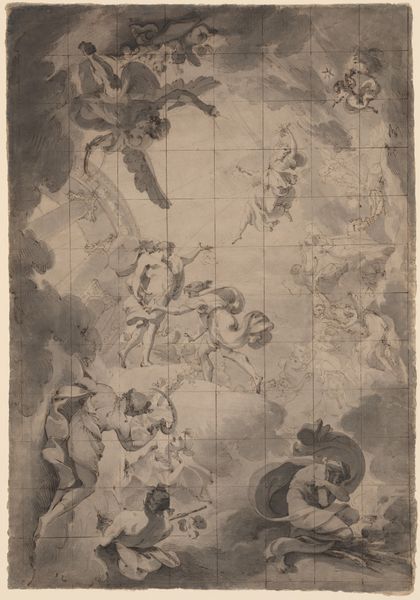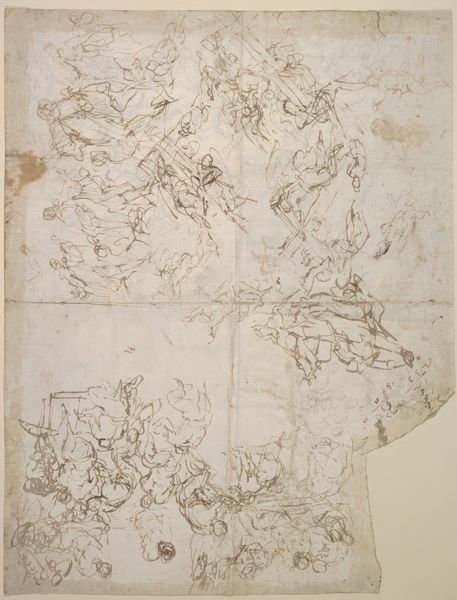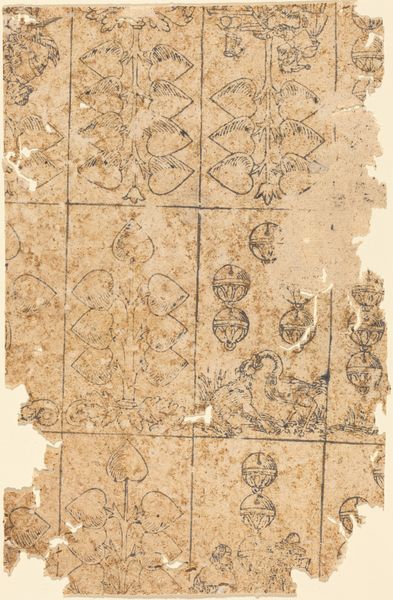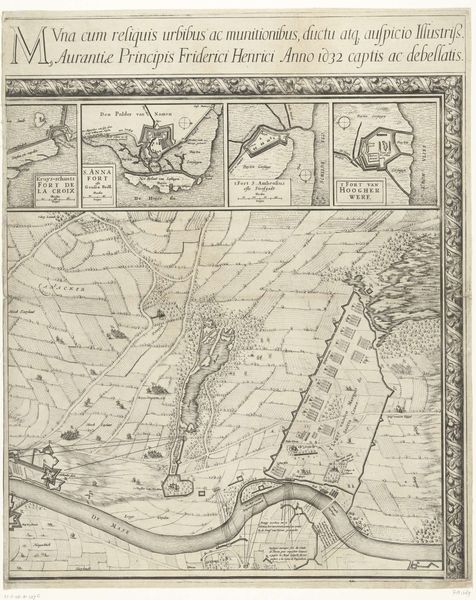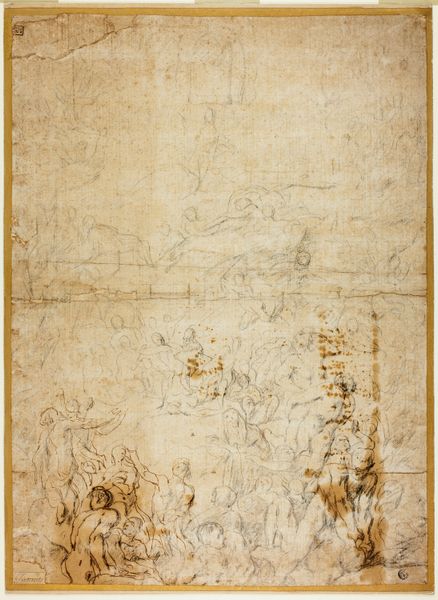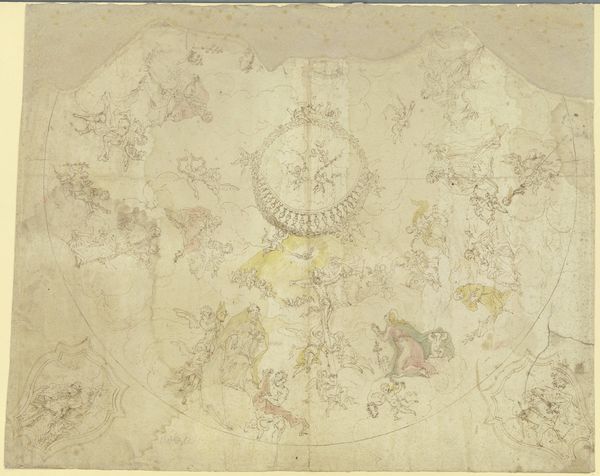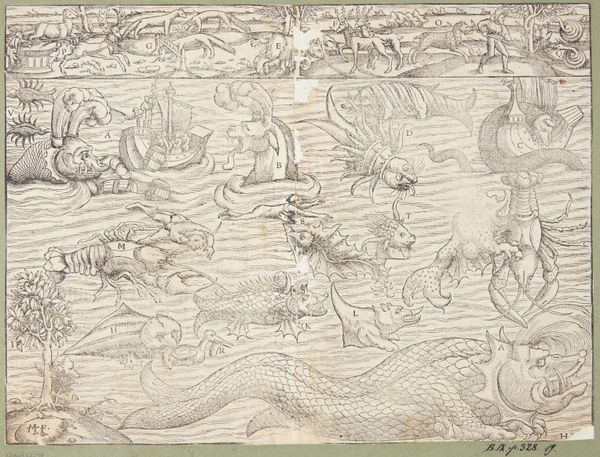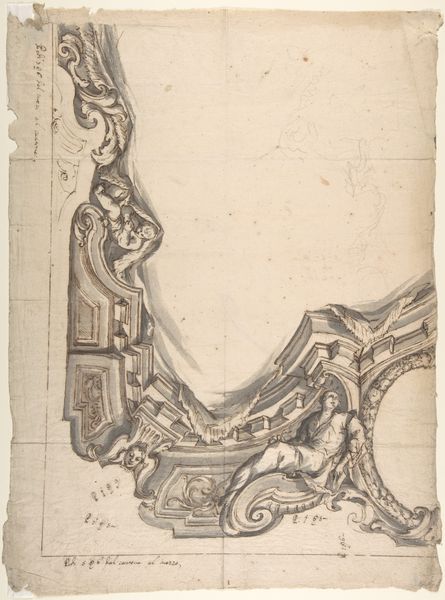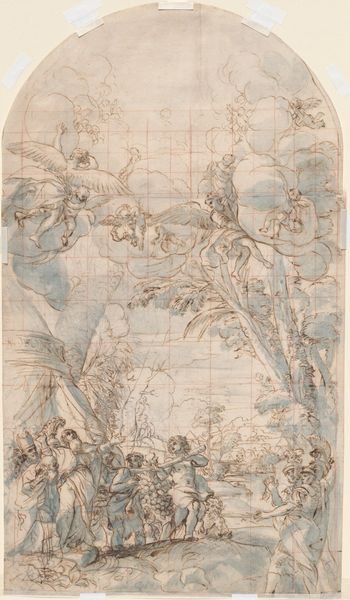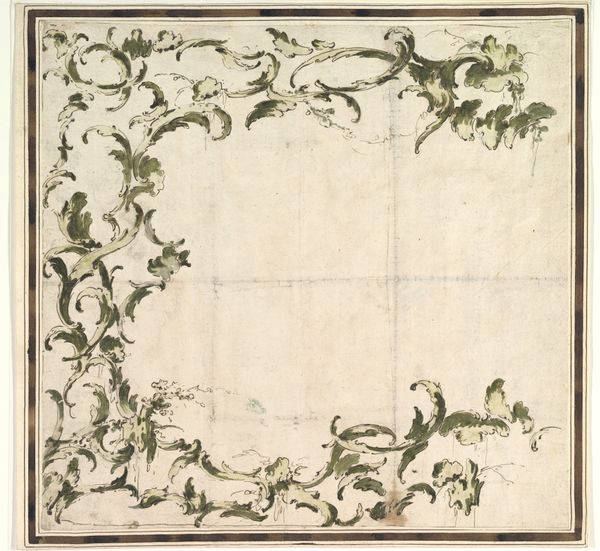
drawing, print, paper, watercolor, ink, inorganic-material, chalk, pen
#
drawing
#
narrative-art
# print
#
figuration
#
paper
#
11_renaissance
#
watercolor
#
ink
#
inorganic-material
#
chalk
#
pen
#
history-painting
#
italian-renaissance
Dimensions: 670 × 353 mm
Copyright: Public Domain
Curator: This drawing is entitled, “Adoration of the Christ Child.” Created by Filippo Bellini sometime between 1580 and 1600. It's currently held in the collection of the Art Institute of Chicago. Editor: It's… interesting. Almost ghostly, seeing it in these sepia tones. The scene is warm, filled with people and yet the lines, particularly the grid, lend it this rather cool, analytical air. I suppose this would have been the artist working to calculate proper size and perspective? Curator: Precisely. We can tell a great deal about Bellini’s process here, by understanding the physical realities and materiality. We know this work on paper utilizes pen, ink, chalk and watercolor. Bellini employed the grid to translate the composition systematically from a smaller sketch, perhaps, to a larger format. You can observe he reinforced his primary figures with multiple strokes of the pen to lend emphasis and depth. Editor: The figures do seem to swim to the surface as a result. It makes me wonder about his intentions for the end piece. What sort of commission would call for such detail, even down to those adorably chubby angels floating overhead? Curator: Well, we see this level of detail frequently within the Italian Renaissance art movement. With the extensive amount of drawing combined with use of inorganic materials like chalk, we can understand his clear understanding and employment of labor within artistic process. There is a social stratification that we are seeing that translates and gives art-historical understanding to the masses. Editor: Yes, there's something very appealing to that level of artistic process becoming so very explicit. Thinking about this piece in terms of labor, not just divinely inspired vision but the skilled labor and materials of production… I have such a new respect for this piece. It transforms my thinking entirely. Curator: Exactly, a true assessment needs that context. Editor: I think so. I’m seeing the underpinnings and appreciating the artist’s calculation… like that grid that I almost dismissed earlier. Curator: By examining artistic creation, the act of its making becomes a cultural statement itself. Editor: You’re right! Well, I'm forever changed. And rather fond of those angels now, too, grid or no grid.
Comments
No comments
Be the first to comment and join the conversation on the ultimate creative platform.
